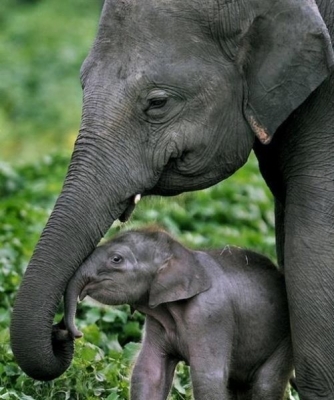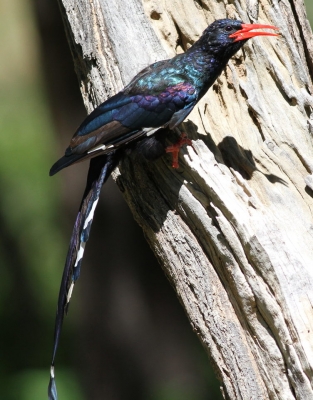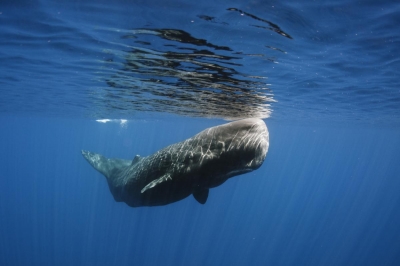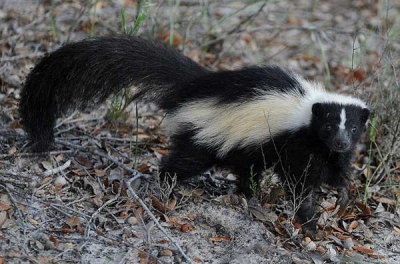
Jumbo bundle of joy
She has the longest pregnancy among mammals – around 22 months. And she also gives birth to the largest baby on land, weighing an average of almost 90 kilos! The female elephant lives for about 60 to 70 years but will only have four offspring during that time.
The baby is born blind and has to rely on its sensitive trunk to find its way about. However, because elephants have a matriarchal society with the oldest female leading the herd, the ‘sisterhood’ lends a hand in caring for the baby. All the females, including grandmothers, sisters, aunts and cousins, help the new mother bring up baby! Young females who are not yet fully mature, are the keenest to mother the calf. They are known as ‘allomothers’.
This kind of babysitting is not only of benefit to the new mothers, who get more time to feed and rest, but it also gives future mothers a chance to practise their skills.
Home sweet home
The orangutan, one of the most intelligent primates in the animal world, spends nearly all its time in the trees. The female orang builds a new nest every night from branches and leaves. She creates more than 30,000 homes during her lifetime! She never puts her babies down and nurses them till they are six or seven years old. She rears them alone. That is the longest dependence of any animal on Earth.
Smelly gift
Koalas, the Australian marsupials that look like cute teddy bears, live exclusively on a diet of eucalyptus leaves. The leaves are toxic, but the koala’s digestive tract is inhabited by bacteria that ingest the poison rendering it harmless.
A koala joey is the size of a jellybean when it is born. Though it has no hair, no ears and is blind, it manages to crawl into its mother’s pouch. The female koala can zip and unzip her pouch using special muscles. The joey remains in the pouch for around six months till it finishes its development. Mother koala feeds it with milk and her own faeces to build up its immunity.
Pass me an arm!
Among marine animals, the female octopus is literally well-armed for the task of mothering! With 50,000 eggs to care for, her hands are full. For 40 days, she stays close to the eggs, protecting them and gently blowing water over them to provide oxygen. She doesn’t get time to feed so she just grabs a bite from her own arms!
Dragon moms
Both alligators and crocodiles dig a hole to lay their 10-50 eggs and build a mound-like nest out of rotting vegetation over it. The nest is like a compost pit, hot enough to incubate the eggs. The temperature determines the gender of the babies – 33 degree C and higher produces males and 28 degree C and lower produces females!
The female stands guard and she can be very aggressive at this time. When the hatchlings are ready to be born, they call out. The mother exposes the nest and gently rolls the eggs in her mouth to crack the shells! After they hatch, she carries them to the water where they start hunting immediately, but stay around her for two years.
Lousy life
The female sea louse is probably the best mom in the world because she sacrifices her life for her children. She’s lured by the male into his burrow where he keeps a harem of 25 or more pregnant females! If that wasn’t bad enough, once the babies are ready to be born, they make their way into the world by eating their mother from the inside out.
Picture Credit : Google











